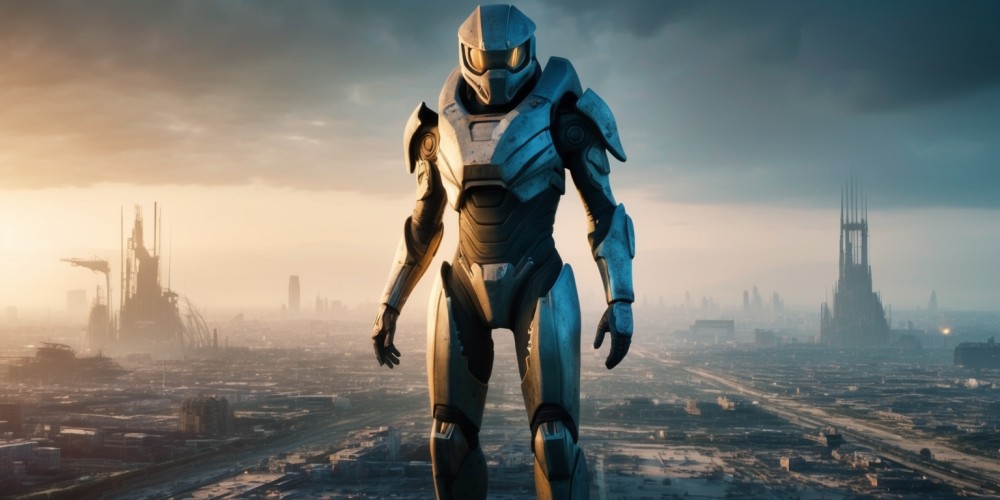Reviving a Sci-Fi Classic: The Timeless Appeal of Edge of Tomorrow
- Nov-30-2024

In the realm of modern cinema, Timeless narratives and gripping performances often become overshadowed by blockbuster franchises. One such gem is “Edge of Tomorrow,” which, despite the fanfare surrounding Tom Cruise’s upcoming “Mission Impossible” film set for release in 2025, remains a beloved yet underrated piece of storytelling. This science fiction action film, which debuted in May 2014, has seen a resurgence, particularly with its recent availability on Netflix. It deserves a closer examination as an adaptation of a Japanese manga and a discussion about its potential future sequels. What follows is an exploration of this captivating narrative, its origins, and the prospects for its return to the screen.
Rediscovering a Cinematic Treasure
The resurgence of “Edge of Tomorrow” on streaming platforms has reinvigorated interest in the film. It swiftly ascended to one of the top streamed projects on Netflix, demonstrating the compelling nature of its story and performances. Viewers old and new have been captivated by the film’s intricate plot and layered characters, highlighting its significance in the expansive body of Cruise’s work.
The Genesis of a Story
“Edge of Tomorrow” finds its roots in the Japanese light novel titled “All You Require is {9cb02f4a-7b69-4d00-a89b-307c641846d1},” written in the early 2000s. This original tale set the stage for a masterful cinematic adaptation. The narrative draws on elements of science fiction and video game mechanics, presenting an engaging exploration of time loops, existential dilemmas, and the human spirit's resilience.
A Closer Look at the Narrative
At the heart of the story is Keiji Kiriya, a soldier embroiled in a war against alien forces called Mimics. His demise in battle, however, is just the beginning. The extraordinary twist occurs when he finds himself thrust back in time to the day prior to the combat, caught in a looping cycle that forces him to relive the day over and over.
<h2>Defining Moments and Character Arcs 
As Keiji navigates multiple loops of his fate, he meets Rita Vrataski, a legendary warrior played by Emily Blunt. Their dynamic adds another layer to the narrative, as she becomes his mentor in an environment where every second is precious and overcoming fate is paramount. The evolution of their relationship is both poignant and thrilling.
Understanding the Loop Mechanism
The concept of the time loop is central to the film's structure. Each reset allows Keiji to refine his combat skills and strategize his approach against the Mimics. The film cleverly illustrates the frustration and growth that accompany each iteration, simultaneously infusing humor and suspense into the action-driven plot.
The Nature of the Mimics
The antagonists, known as Mimics, symbolize the ever-looming challenge of fighting against insurmountable odds. These creatures serve as both adversary and catalyst, pushing Keiji toward heroism as he learns the nuances of their attacks and weaknesses through his repeated encounters.
Breaking Boundaries in Adaptation
“Edge of Tomorrow” stands out as an adaptation that respects its source material while also innovating for wider audiences. The film blends high-octane action with a character-driven story, showcasing how the narrative translates from a page to the screen with adept direction and engaging performances.
The Duality of Heroism
The movie explores the true essence of heroism. Initially portrayed as a coward, Tom Cruise’s character evolves into a figure of bravery and determination, embracing the mantle of “Killer Cage.” The transformation serves to resonate with viewers who appreciate themes of growth and redemption.
Critical Reception and Cultural Impact
Upon its release, “Edge of Tomorrow” garnered acclaim, achieving a remarkable rating of 91% on Rotten Tomatoes. Critics praised not only the performances and action sequences but also the clever script and direction. As a result, it gained a cult following, proving that thoughtful science fiction can captivate audiences despite the noise of more commercial projects.
The Homecoming of “Edge of Tomorrow”
Netflix’s decision to stream “Edge of Tomorrow” introduced the film to a new wave of viewers, showcasing its relevance in today’s cinematic landscape. Its top-ranking status on the platform speaks volumes about the demand for engaging narratives that blend action with thoughtful themes.
Talks of a Sequel
Speculation about a sequel has circulated since earlier this year, with director Doug Liman hinting at the possibilities. However, various challenges have arisen in the development process. The intricate balancing act involving Tom Cruise’s commitments to other franchises remains a significant hurdle.
The Challenges of Development
Current projects for Cruise, including the “Mission Impossible” series and a new “Top Gun” installment, have put the sequel's progress on the back burner. Liman remains optimistic, acknowledging the enduring interest in further exploring the universe established in the first film.
Emily Blunt's Availability
Another obstacle lies in the scheduling of Emily Blunt, who has been tied to an untitled Universal project slated for 2026. Balancing actresses' schedules has become a common challenge within Hollywood, impacting production timelines and story development.
Financial and Logistical Constraints
Aside from talent availability, the financial implications of producing a sequel to such an acclaimed film cannot be overlooked. Ensuring a budget that meets both creative aspirations and commercial viability is essential for the potential success of “Edge of Tomorrow Part 2.”
The Future Awaits
Despite the hurdles, the narrative possibilities for a sequel remain tantalizing. Fans and newcomers alike express their eagerness for a continuation of Keiji Kiriya's journey to further explore the implications of heroism, the essence of sacrifice, and the allure of time travel. The film's success may indeed pave the way for a broader exploration of its rich universe.
Conclusion: A Call for Revival
“Edge of Tomorrow” deserves recognition not just as a brilliant adaptation of a Japanese manga but as a standalone masterpiece in its genre. As anticipation builds for a potential sequel, the film highlights the importance of storytelling that resonates with audiences on multiple levels. A return to this universe would not only satisfy long-time fans but also introduce new viewers to its captivating blend of action, depth, and charm.












